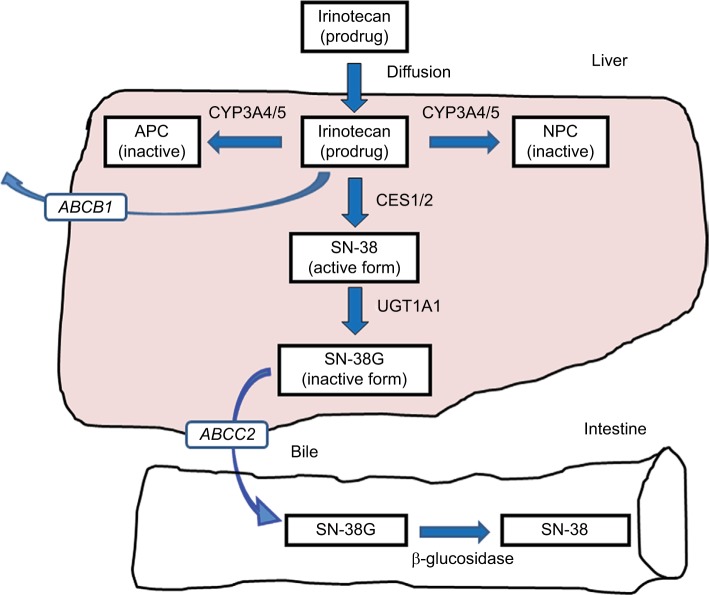Figure 1.
Transport pathway of irinotecan.
Notes: A prodrug, irinotecan, is moved into hepatic cells by passive effusion. Activation to an active form, SN-38, is mediated by CES1/2. Deactivation to an inactive form, SN-38G (glucuronidated SN-38), is mainly mediated by UGT1A1. A part of SN-38G is hydrolyzed to SN-38 by bacterial β-glucosidase. Moreover, irinotecan is degraded to APC and NPC metabolites by CYP3A4/5. Irinotecan and metabolites are transported by P-glycoprotein, a protein of the cell membrane that pumps foreign substances out of cells, which is encoded by ABCB1 gene. Biliary excretion of SN-38G is mainly mediated by the MRP2/ABCC2.
Abbreviations: APC, 7-ethyl-10-[4-N-(5-aminopentanoic acid)-1-piperidino] carbonyloxycamptothecin; CES1/2, carboxylesterases 1 and 2; CYP3A4/5, cytochrome P450 isoforms 3A4 and 3A5; MRP2/ABCC2, multidrug resistance associated protein-2; NPC, 7-ethyl-10-(4-amino-1-piperidino) carbonyloxycamptothecin; SN-38, 7-ethyl-10-hydroxycamptothecin; UGT1A1, uridine diphosphate glucuronosyltransferase 1A1.

